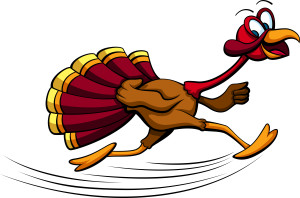 How to Enjoy the Holidays without Adding to Your Waistline
How to Enjoy the Holidays without Adding to Your Waistline
The holidays are a time for family, friends, and quality time spent together. They are also a time for mashed potatoes, stuffing, and hot apple pie. If you are one of the millions of Americans who finds themselves gaining even a few pounds during the holiday season, know that this year, you can maintain, and not gain weight by simply making small sacrifices, smart choices, and staying active. Before you pledge an oath to skip all of your favorite holiday fare, review the seven tips below. You can still enjoy all of your most-loved foods this holiday season, without compromising on your health.
- Don’t starve yourself before a holiday meal. While you may think that skipping lunch will help balance out an extra-large dinner, understand that arriving to a holiday meal hungry may encourage you to eat even more than you would have if you had eaten a sensible lunch. If you do arrive hungry to an event, drink a glass of water before you start to nosh on appetizers to try to curb your initial hunger pangs.
- Weigh yourself twice a week. Bi-weekly check-ins with the bathroom scale will help you make sure that you are maintaining, and not gaining during the holiday season. Be sure to weigh yourself at the same time of the day, preferably first thing in the morning before you eat anything, to make sure you get the most accurate readings.
- Pace yourself through happy hour. It may be tempting to overeat when you are surrounded by trays of delicious appetizers, but try to keep in mind that every holiday event is a marathon, not a sprint. Sample just a few of the appetizers that are most appealing to you, and then save the rest of your appetite for the main meal.
- Don’t give-up your exercise routine. The holidays are often packed with events, parties, shopping, and more social obligations than any other time of the year. Don’t skip your exercise routine during the holidays to accommodate your busy schedule. Make sure to exercise for at least 30 minutes a day, three to five days a week.
- Plate your food responsibly. Whether you are at a buffet or eating family style, curb the temptation to pile your plate with teetering towers of food doused in a layer of gravy. Take the smallest plate available and select reasonable portion sizes of just those items you want the most.
- Don’t skip desserts – but limit your portion sizes. You don’t have to skip your Mom’s famous, once-a-year apple pie, but practice the three-bite rule. Savor the first taste, a second satisfying bite, and a lingering third forkful – that’s it.
- Chew slowly and savor the taste of your food. During this most decadent and activity-packed time of the year, make sure that you are enjoying every meal, and not simply rushing through them and over-eating in the process. Eating too fast can result in extra pounds.
This holiday season, don’t deny yourself your favorite annual indulgences, but do monitor your overall consumption and stay active. With proper awareness and attention paid to your meals this holiday season, you can slip into the New Year without having gained an ounce.
For more ideas on how to stay healthy this holiday season, you might find the following articles helpful:
How to Have a Happy and Healthy Holiday Season
Stay Trim with these Healthy Eating Tips
More
 The Importance of Taking Care of your Inner Self
The Importance of Taking Care of your Inner Self
As women, we have many health factors to monitor. From heart health, to breast cancer risk, to healthy pregnancies, and even managing the symptoms of menopause. While all of these are important aspects of your health, every woman should be aware of the health and safety of her bones — the structure of her inner self.
Weakened bones can put a woman at serious risk for accidental injury, a risk that increases with age. A woman’s risk of breaking a hip is equal to her combined risk of breast, uterine, and ovarian cancer. Approximately eight million women in the United States are suffering from osteoporosis, a medical condition in which one’s bones become brittle and fragile due to a loss of tissue, or a deficiency of calcium or vitamin D. A woman’s risk for developing osteoporosis, or osteopenia — a condition characterized by reduced bone mass that is of lesser severity than osteoporosis — increases with age. Fortunately, there are steps you can take throughout your life to help protect your bones and lower your risk for osteoporosis and other bone issues.
Some of the risk factors associated with osteoporosis for women include:
- Age. Decreasing levels of estrogen, a female hormone that protects bones, can reduce levels of bone mass as women reach the age of menopause. In the five to seven years following menopause, a woman can lose up to 20 percent of her bone density.
- Family history. Women with a parent or sibling with osteoporosis are at a greater risk for developing the condition.
- Body frame size. Women with smaller, thinner bones are at a greater risk for bone fractures, due to their lower levels of bone mass.
- Thyroid levels. High levels of thyroid hormone, which may be caused by an overactive thyroid gland, can cause bone loss.
- Anorexia. Women with eating disorders are at higher risk of developing osteoporosis. Low levels of food intake can reduce a woman’s levels of protein and calcium — nutrients that protect bones.
To reduce your risk of developing osteoporosis or other bone disorders, follow these five tips:
- Reduce your risk of chronic inflammation. Inflammation can interfere with your body’s ability to repair bone mass, which, over time, can lead to brittle bones. To limit chronic inflammation, make sure your digestive system has optimal levels of “good” bacteria that aid in digestion and the absorption of nutrients. To ensure you are getting enough good types of bacteria, consume enough fiber and yogurt, and limit your consumption of red meat. Ask your doctor about taking a probiotic supplement to aid your digestive system as well.
- Protect your bones with vitamin D. Vitamin D is one of the most important nutrients for protecting bones. It helps the body to absorb calcium and aids in the removal of old bone tissue. While natural sunlight stimulates vitamin D production, this important nutrient can also be obtained from daily supplements.
- Add omega-3 fatty acids to your diet. These nutrients help reduce inflammation and improve bone health. Foods high in fatty acids include salmon, flax seeds, and walnuts.
- Increase your vitamin K. Vitamin K helps to limit the loss of calcium from the kidneys and helps to retain several of the proteins needed for bone production. Vitamin K can be found in sauerkraut and kimchee.
- Protect bone mass with magnesium. Low magnesium levels have been associated with decreased bone mass, which leads to frail bones. Stock-up on spinach, almonds, avocados and soy to naturally increase your levels of magnesium.
More

Fat free diets. Fat free foods. For years, fat free fanatics have suffered from fat free mania, desperately trying to avoid any fat in their diets out of a belief that a fat free lifestyle is a guaranteed weight loss strategy. What many fat fearing dieters may not realize, however, is that our bodies need a healthy level of fat in order to maintain overall wellness. As a matter of fact, The United States Department of Agriculture recommends that adults get 20 – 35 percent of their total calories from fats. Fats provide essential fatty acids, offer fat-soluble vitamins, and are an important source of energy. It’s important to understand that there are different types of fats, and that some are healthier for you than others. Instead of trying to live a completely fat-fee lifestyle, simply knowing the different sources of good and bad fats, and what constitutes a healthy amount of each, can truly help you meet your weight loss goals.
The Good
Unsaturated fats are considered good fats. They include polyunsaturated fatty acids and monounsaturated fats. When eaten in moderation, our bodies use mono- and polyunsaturated fats to replace unhealthy fats, such as saturated or trans fats, a process that can help lower cholesterol and reduce our risk of heart disease. Omega-3 fatty acids are a specific type of good fat that offer healthy benefits for our hearts. Found in fatty fish such as salmon, trout, catfish, and mackerel, as well as flaxseeds and walnuts, The American Heart Association recommends eating two servings of these polyunsaturated fats each week, preferably in the form of fatty fish. While omega-3 supplements are available, it is healthiest to obtain the nutrient from food sources, rather than from vitamin supplements.
Monounsaturated fats are another form of good fat that can help prevent heart disease. Most commonly found in olive oil, avocados, hazelnuts, almonds, Brazil nuts, cashews, sesame seeds, pumpkin seeds, canola, oil and peanut oil, these healthy fats are a good source of vitamin E.
The Bad
Saturated and trans fatty acids are the unhealthy fats that should only be eaten sparingly. These bad fats can raise cholesterol levels, clog arteries, and increase the risk of heart disease, colon cancer, and prostate cancer. Saturated fats are most commonly found in animal products such as meat, poultry skin, high-fat dairy and eggs, and some vegetable fats such as coconut and palm oils.
Trans fats come in two forms: the kind that is naturally occurring and can be found in small amounts in some dairy and meat, and the kind that is artificial and that occurs when liquid oils are hardened into “partially hydrogenated” fats.
The Ugly
Artificial trans fats are having the greatest negative impact on the average American diet. Typically used in the preparation of fried foods, baked goods, cookies, icings, crackers, and packaged snack foods, experts warn that artificial trans fats are even more detrimental to our health than butter or lard. Even small amounts of artificial trans facts can increase our risk of heart disease.
Still confused? Use the chart below to identify good and bad fats so that you can incorporate the proper amounts of each in your healthy diet:
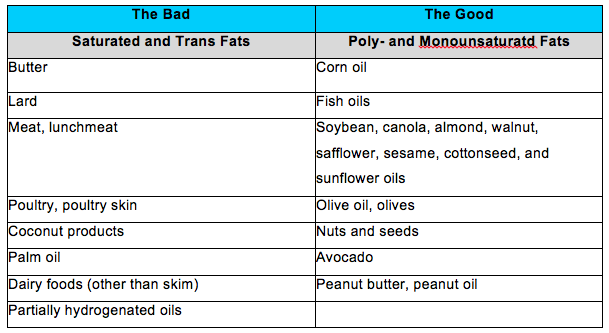
More
 You may have heard by now that if you live north of the Mason-Dixon line, your body can’t make enough Vitamin D for nearly 6 months of the year. From approximately November through March, sunlight is insufficient to stimulate the production of Vitamin D in skin. Why should you care?
You may have heard by now that if you live north of the Mason-Dixon line, your body can’t make enough Vitamin D for nearly 6 months of the year. From approximately November through March, sunlight is insufficient to stimulate the production of Vitamin D in skin. Why should you care?
Because Vitamin D deficiency has been linked to increased risk of asthma, cancer, heart disease, diabetes and seasonal affective disorder, among other conditions. We also need it for healthy bones. And unlike almost any other nutrient, you can’t get enough Vitamin D from food alone no matter how well you eat.
Other Sources of Vitamin D
When you can’t get enough sunlight to make Vitamin D on your own, you have to turn to other sources. Very few foods naturally contain Vitamin D. Fatty or oily fish such as salmon, tuna, and mackerel provide some, and small amounts of the vitamin are found in beef liver, cheese, and egg yolks. Some dairy products like milk and yogurt and even some juices and cereals are fortified with D.
However, most people have to turn to supplements during the winter months, or during the summer months if you spend most of your time inside. The amount you take will depend on many factors, including where you live, your age, whether you use sunscreen, and the color of your skin. You should always consult with a doctor before taking any vitamin supplement, so you don’t make yourself ill by taking too much or waste your money by taking too little to be helpful.
Vitamin D and Women’s Health
Pregnant women need extra Vitamin D: it supports healthy bone development in the baby, and deficiency is related to preeclampsia for the mother. The average prenatal vitamin doesn’t contain enough Vitamin D, so be sure to ask your OB-GYN if you need additional supplementation.
And if you’re trying to get pregnant and struggling with infertility? Vitamin D deficiency may be playing a role. Be sure to ask your doctor to test your levels if you are having difficulty conceiving.
If you’re looking for an OB/GYN practice that cares about your overall health, call to make an appointment at one of Chouchani, Sayegh and Bagnarello’s three locations. We look forward to meeting you!
Photo courtesy of freedigitalphotos.net.
More
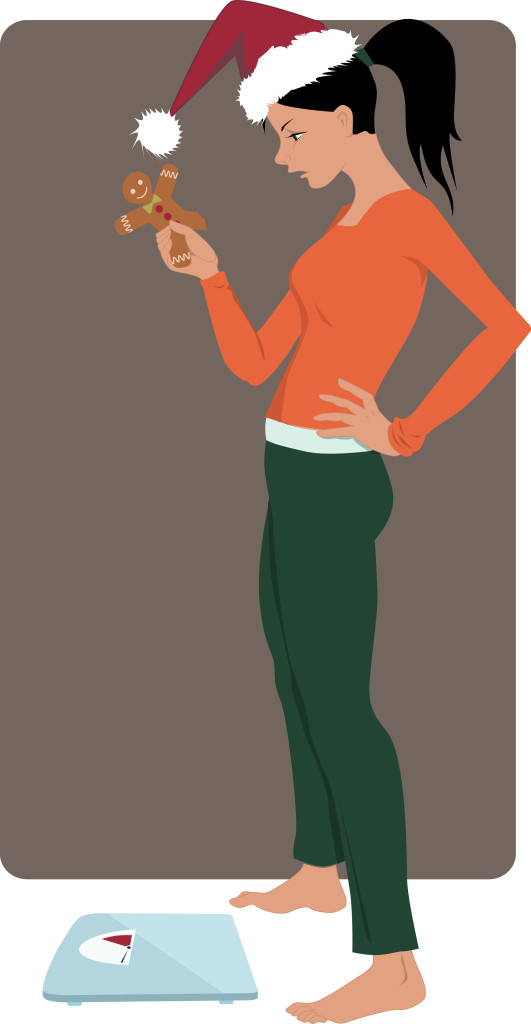 The holidays are a great time for family get-togethers, conversation and of course, food. For those of us trying not to gain the 25 pounds of Christmas, following these simple tips and tricks can keep you trim this holiday season while still letting you sneak a few bites of those steaming hot gingerbread men.
The holidays are a great time for family get-togethers, conversation and of course, food. For those of us trying not to gain the 25 pounds of Christmas, following these simple tips and tricks can keep you trim this holiday season while still letting you sneak a few bites of those steaming hot gingerbread men.
Balance your beverages
Having holiday-themed drinks can be fun, and tasty, but are best consumed in moderation. Hot chocolate, eggnog, apple cider, holiday lattes etc. can be high in sugar and fat, leaving your diet plan damaged by the end of the day. However, the following small changes can help make your drink choices a little less detrimental:
- Avoid adding marshmallows, whipped cream or “drizzle” to your beverages
- Mix eggnog or hot chocolate with half a glass of skim/low-fat milk
- Look for low-fat/low-sugar options
- Avoid adding alcohol, as it mostly adds extra sugar and calories
- Drink a glass of water after each specialty beverage to help fill your stomach and prevent overconsumption
Eat smart, don’t be a Scrooge
Starvation and dietary self-sacrifice during the holiday dinners and parties will only lead to aggravation and irritation. Besides, no one wants to hear about and all the things you can’t eat while they tear into that Christmas turkey. However, the next few adjustments can help keep you, your belly and your loved ones happy this season:
- Choose light over dark meat and avoid eating the skin for less calories and fat
- Be aware of how much you’re putting on your plate
- Avoid too much gravy or dressing in order to limit fat, calories and sodium
- Choose whole-grain breads, lean meats, nuts, veggies and fruits for appetizers
- Consume sweets/deserts in moderation or split your choice with a friend
Kitchen smart, kitchen savvy
Whether cooking for a work party or family dinner, making smarter food choices can help you and others have a healthier holiday.
- Use fresh fruits and vegetables instead of the canned option
- Use herbs and spices to flavor your masterpiece instead of loading it up with butter and salt
- Complement heavy dishes with roasted vegetables or a tossed salad
- Use whole-wheat flour instead of white flour when baking
- Cook with vegetable or olive oil instead of butter
- Use low-fat or skim milk instead of heavy cream
- Add dried fruit to baked goods instead of candies or chocolate chips
- Flavor dishes with vanilla, almond and peppermint extracts instead of butter and sugar
Win over the workplace
Work parties and functions can be the most difficult place to refuse poor food choices. But, by signing up to bring your own dish you can provide a healthy option for you and others.
Making sure to eat healthy throughout the day can also prevent you from overeating poor food choices later by keeping your stomach full and satisfied, and your mind away from unhealthy cravings.
Avoid fried and buttered foods and keep away from items with an abundance of cheese and cream. Supplement instead with grilled items, vegetables and dip or whole grain crackers.
Stay active despite the snow
The change in the weather means more layers, less daylight and an overall tendency to avoid leaving the house whatsoever. However, one of the best ways to retain your fitness physique is by beginning or maintaining an exercise regimen.
If you choose to workout outside, it’s important to wear the right gear, usually including sweat-wicking fabrics, and to keep important parts of your body covered with gloves, ear bands etc. It’s important to stay hydrated by drinking fluids before and after your workout, even if you aren’t thirsty.
Taking a walk, stretching or playing a holiday party game can be a great way to get your digestive system moving after dinner.
The holidays can be a great time to relax and enjoy time with family, friends and loved ones. This season, don’t let your inner Grinch take over! Keep an eye on the little choices you make. After a while, those calories can really add up!
More
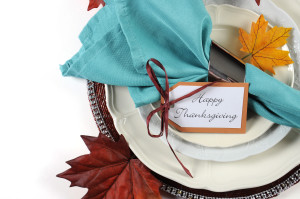 For anyone attempting to lose weight around the holidays, Thanksgiving is a prime night for temptation and guilty pleasure. However, there are ways to watch your weight around that glistening, golden brown turkey this November.
For anyone attempting to lose weight around the holidays, Thanksgiving is a prime night for temptation and guilty pleasure. However, there are ways to watch your weight around that glistening, golden brown turkey this November.
Thanksgiving is a time for the declaration of what you’re grateful for, so why not start out the season with the recognition of thanks for your health. So begin the season in a positive way, avoid the domino effect of stuffing your face after the Macy’s parade.
Take a walk after eating.
Though it may seem silly, announce your venture right before dinner, and some of your family or friends may want to join. A walk in the cool weather will not only help your food start digesting, but it may also deter your thoughts from dessert.
Focus on family.
Instead of constantly thinking about all the food you could be or will be eating, keep your mind on the celebration. Spend your time enjoying all the sounds, smells and company that doesn’t come around too often, and truly take time to absorb the season for what it was meant for instead of thinking in circles about how you “can’t have” all the pie you’d like.
Team up.
Make plans with a friend or family member for the morning following Thanksgiving festivities. Working out can immediately decrease feeling tired or worn down, and creating a commitment with another person can show how serious you are about not putting on weight throughout the holidays. In addition, having a morning workout listed on next-day’s schedule may deter you from overeating the night before.
Follow the reason for the season.
Instead of sitting around at the table or helping yourself to another pile of leftovers, offer to help clean up the table or wash the dishes afterwards. Not only will moving around help digest your food, but it will distract you from the additional helpings and deserts you might have otherwise put on your plate.
Eat when you’re hungry and stop when you’re full.
This cardinal rule can be the best advice for dieters everywhere, though it may not be the easiest mantra to follow. Plan to attend your holiday meal with the mindset of stopping eating when you’re not hungry anymore.
Most people attend Thanksgiving under the impression that they’re going to eat until they’re stuffed full, often making themselves feel sick and unwilling to do much afterword. By eating in moderation you can enjoy the holiday without setting yourself back too far.
Thanksgiving can be a wonderful opportunity to choose what truly makes a difference in our lives for the better. Here at our practice, we’re truly thankful for the opportunity to provide care to you as our patients and ultimately as our friends. So, this holiday season we encourage you to be as thankful for yourselves and your health as we are for you. Happy Thanksgiving from all of us at Chouchani, Sayegh and Bagnarello M.D.! Wishing you a health and fun-filled holiday.
More
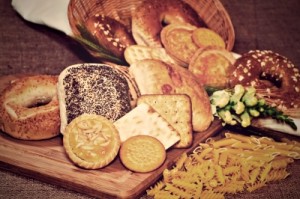 Gluten-free has become the big buzzword in dieting right now. You’ve probably heard or read about how much weight you’ll lose if you go on a gluten-free diet. But before you go on a gluten-free diet yourself, here are some things to consider:
Gluten-free has become the big buzzword in dieting right now. You’ve probably heard or read about how much weight you’ll lose if you go on a gluten-free diet. But before you go on a gluten-free diet yourself, here are some things to consider:
- Gluten-free diets can be seriously deficient in important nutrients, such as fiber, iron, folate, niacin, thiamine, riboflavin, calcium, vitamin B12, phosphorus and zinc. Why? Because many gluten-free products are made with refined, unenriched grains and starches, which are high in calories but low in vitamins and minerals.
- Because wheat is ubiquitous in the American diet, completely eliminating gluten requires giving up most breads, crackers, breakfast cereals, conventional pastas, pastry goods, and a wide range of processed foods that contain small amounts of gluten.
- Most gluten-free alternatives, such as pasta and bread, cost significantly more than their conventional counterparts. Some cost twice as much!
- Gluten-free diets were designed to combat celiac disease, a serious autoimmune disorder that virtually destroys the intestinal tract. If you self-diagnose, or decide to go gluten-free to lose weight, you could put yourself in danger—because you would never be able to get an accurate diagnosis of your symptoms if you are indeed allergic to or intolerant of gluten.
Why do people lose weight on gluten-free diets?
When people eliminate gluten and lose weight, they assume it’s because of the lack of gluten they’re eating. But most likely, they lose the weight because they’ve cut out the excess calories found in many flour-based snack foods. You’d get the same results from eating more fruits and vegetables and exercising more—and you could still eat bread, pasta or birthday cakes in healthy moderation!
What if I really shouldn’t eat gluten?
Are you experiencing any combination of the following symptoms? By themselves, they don’t necessarily indicate a problem with gluten, but in combination, they might:
- Gastrointestinal issues, like intense bloating, diarrhea and constipation
- Low iron
- Itchy skin rashes on your arms, torso, face, buttocks, elbows and hairline
- Migraine headaches that start within an hour or two of ingesting gluten
- Joint pain
If so, your first step should be to have a complete check-up with your physician.
You may then have to consult with medical specialists, such as an allergist for wheat allergy and a gastroenterologist for celiac or another gastrointestinal disease, to narrow down your diagnosis and treatment. If you have a wheat allergy, you have to avoid wheat, but you don’t have to avoid gluten from other grains. If you have celiac disease, you must avoid gluten altogether.
The bottom line: If you think you may have a problem with gluten, get tested. If you don’t, going truly gluten-free has no health benefits.
Any questions?
Please call Chouchani, Sayegh and Bagnarello, where we believe in educating our patients to live the healthiest possible lifestyles. Our Ob-Gyn group has been serving the Western New York community for over 30 years.
Photo courtesy of freedigitalphotos.net
More
 How to Enjoy the Holidays without Adding to Your Waistline
How to Enjoy the Holidays without Adding to Your Waistline






